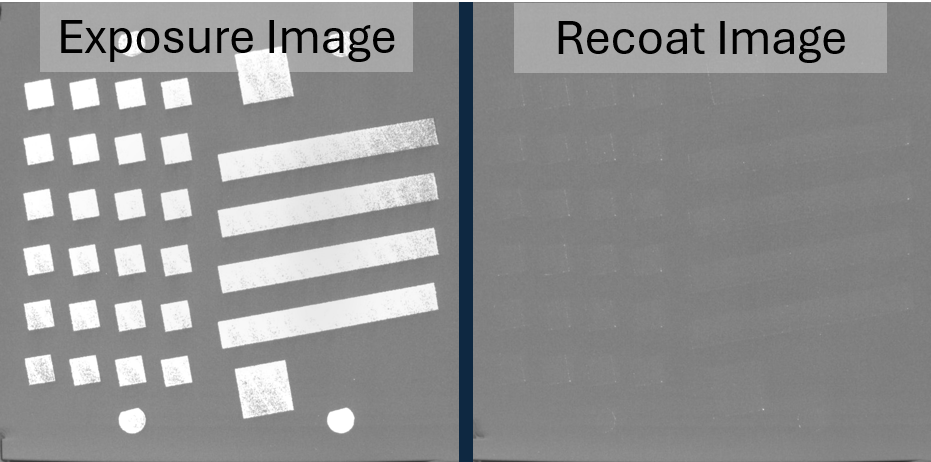Our first published case study illustrates LAMQC’s abilities to find a hidden short feed.
The goal of the case studies is to show:
- What an operator would have known.
- When they would have known it.
- What they could have done about it.
This build is from an EOS M290, contains 2266 build layers (4532 images) and has been released by Oak Ridge National Labs.
Nearly all build layers recoated properly. A well trained operator watching this build closely would likely have not have noticed any build issues.
This build is an excellent example of LAMQC’s ability to highlight stochastic (randomly occurring) AM build anomalies.

This build started properly, ended properly and ALMOST all of the layers in between were acceptable.

Build Anomalies – Graph
LAMQC generates a graph of anomaly areas at each build layer. Each anomaly type is represented by a different colored line on the graph.
The blue line shows Recoat Bright anomalies and the green line shows Bad Weld or Soot anomalies.
The graph for this build illustrates that there were three significant Recoat Bright events and one significant Bad Weld or Soot event.
Only one Recoat Bright event violated anomaly limits. LAMQC would have notified the operator via email of a Recoat Bright event at layer 1595.
Build Anomalies – Solid Model
Graphs provide an effective build quality summary, but do not communicate the location of anomalies relative to AM part(s). Anomaly locations are often required to properly disposition AM parts.
Solid models, combined with Part Purchaser acceptance criteria, allows Part Providers to determine if anomalies occur in acceptable or rejectable regions of the build.
LAMQC generates three solid models for this build:
Weld: AM parts, supports
Bad Weld or Soot: Bad weld, soot
Recoat Bright: Shortfeeds, super elevation, peel ups
LAMQC finds more anomaly types, but only two anomaly types are present in this build.
The solid models clearly show the parts impacted by the Recoat Bright and Bad Weld or Soot anomalies. Clear communication of anomaly type, location and size enables the Part Purchasers to understand build quality and properly disposition AM part(s).
Build Report
Allowing any part to continue down the manufacturing router requires a PASS / FAIL decision. In LAMQC, the summary information required to make this decision is contained in the build report.
LAMQC build reports contain:
-General build information,
-Inspection limits for each anomaly type
-PASS/FAIL for each anomaly type
-Overall PASS / FAIL
-Graph of anomaly sizes for each layer
-Layer camera images of the largest anomalies of each type
LAMQC build reports are simple to understand and should be combined with anomaly solid models to provide substantiation details on AM Supplier Deviation Requests (SDR’s), Non-Conformance Notification’s (NCN’s) or Engineering Review Boards (ERB’s).
LAMQC is designed to effectively communicate the size, location, orientation and type of AM build anomaly to the AM Purchaser before part(s) continue down the manufacturing router.

Page 1: PASS/FAIL, General Build Data and Anomaly Graph

Page 2: The largest failed anomalies of each type
Hidden Shortfeed: Case Study Summary
1
What an Operator would have known.
The operator would been made aware of the large Recoat Bright (short feed) anomaly on layer 1595 as well as the smaller Recoat Bright and Bad Weld or Soot anomalies. The operator review relevant layer camera images, the anomaly graph and solid models of the build anomalies.
2
When they would have known it.
The operator would have been notified of the Recoat Bright anomaly immediately with an email alert. The other anomalies would have been visible in the LAMQC graph and solid models.
3
What they could have done about it.
Prototype Part:
Review LAMQC alert and data. Continue build. Ensure anomaly/build recovery.
Critical Application:
Highlight anomaly regions for focused CT scan, cut-ups and/or effects of defects studies.
If the part is found to be acceptable, open LAMQC allowable limits.
Critical Application, Well Defined Acceptance Limits:
If the builds exceeds well defined acceptance limits, terminate build.
